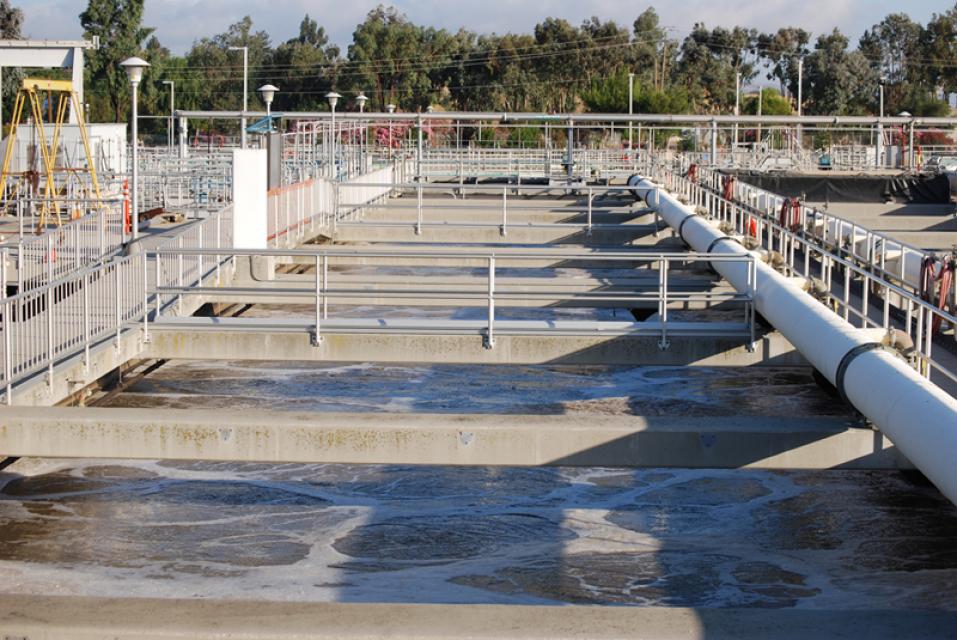Dependable Professionals Offering Top-Notch Wastewater Solutions
Dependable Professionals Offering Top-Notch Wastewater Solutions
Blog Article
Comprehending Wastewater Therapy Processes and Their Environmental Impact
The complexities of wastewater therapy processes play a critical role in mitigating environmental challenges connected with water pollution. Each stage, from initial to advanced treatments, is developed to address specific pollutants, ultimately safeguarding both public wellness and aquatic communities. Despite technological innovations in treatment effectiveness, significant challenges linger, including the administration of residual pollutants and the ramifications of nutrient overflow. As we discover the complexities of these procedures, it becomes vital to wonder about just how far present approaches can develop to satisfy the expanding needs of sustainability and environmental conservation.
Overview of Wastewater Therapy
Exactly how is wastewater changed right into a secure source for the atmosphere? Wastewater treatment is a vital process created to eliminate contaminants from made use of water, consequently safeguarding public health and protecting ecosystems. This procedure begins with the collection of wastewater from household, commercial, and business sources, which is then routed to treatment facilities.
At these facilities, numerous physical, chemical, and biological approaches are employed to deal with the wastewater. Ultimately, biological treatments, such as activated sludge procedures, make use of microbes to damage down natural issue.
The treated effluent can be safely released right into natural water bodies or reused for irrigation and industrial objectives, promoting source preservation. In addition, the therapy procedure produces biosolids, which can be repurposed as plant foods or dirt amendments, even more improving sustainability.
Stages of Therapy Processes
The wastewater treatment procedure typically includes 3 primary stages: preliminary, main, and secondary treatment. Each stage offers a distinctive function in decreasing the pollutant load and guaranteeing the effluent meets environmental standards prior to discharge.

The primary treatment stage focuses on the physical splitting up of put on hold solids from the wastewater. With sedimentation, much heavier particles work out at the end of sedimentation storage tanks, developing sludge, while lighter products, such as oils and oils, float to the surface and are skimmed off. This process dramatically decreases the organic and inorganic lots in the wastewater.
Secondary treatment is an organic procedure intended at further reducing the focus of organic issue. This stage is vital for achieving the required biochemical oxygen demand (BOD) decrease, inevitably leading to cleaner effluent prepared for discharge or additional treatment.

Advanced Treatment Technologies
Following the additional treatment procedures, advanced therapy innovations play a vital duty in more boosting the quality of treated wastewater. These technologies are made to eliminate residual impurities that are not efficiently gotten rid of during main and secondary treatments, guaranteeing the effluent satisfies rigid regulative criteria.
Among the special info widely used innovative treatment approaches are membrane filtering, reverse osmosis, and advanced oxidation processes. Membrane filtering, consisting of microfiltration and ultrafiltration, works in dividing great fragments, virus, and colloids from the water (Wastewater). Reverse osmosis makes use of semi-permeable membranes to eliminate dissolved solids, resulting in premium water appropriate for various applications
Advanced oxidation processes (AOPs) utilize strong oxidants to break down natural contaminants, consisting of pharmaceuticals and personal care products that are immune to conventional therapy. These approaches boost the biodegradability of complicated substances, promoting their removal.
Another significant modern technology is the use of organic nutrient elimination processes, which particularly target nitrogen and phosphorus, avoiding eutrophication in getting water bodies. Generally, sophisticated treatment modern technologies are important for achieving greater levels of filtration, advertising water reuse, and safeguarding public wellness while addressing the difficulties related to wastewater management.
Ecological Benefits of Therapy
Numerous environmental benefits emerge from reliable wastewater therapy procedures that add to ecosystem health and wellness and sustainability. Mostly, these procedures substantially reduce the release of dangerous pollutants right into all-natural water bodies, which aids preserve water environments. By removing pollutants such as hefty steels, nutrients, and pathogens, treated wastewater alleviates the threat of waterborne conditions and promotes biodiversity in aquatic settings.
In addition, wastewater therapy centers commonly use advanced technologies that enable why not look here water recycling and reuse. This method not only saves fresh water sources but also minimizes the demand on natural water products. Boosted nutrient elimination from wastewater can likewise prevent eutrophication, a process that leads to algal flowers and succeeding oxygen deficiency in aquatic systems.
Furthermore, effective treatment procedures can reduce greenhouse gas exhausts, particularly methane and nitrous oxide, which are typically launched during untreated wastewater disintegration. By recording and using biogas from anaerobic digesters, centers can convert waste into eco-friendly power, thus adding to a decrease in fossil gas dependence.
Challenges and Future Trends
While the environmental advantages of wastewater therapy are clear, several difficulties continue that prevent ideal results in this area. One major problem is aging infrastructure, which commonly brings about inadequacies and boosted functional expenses - Wastewater. Lots of therapy plants were created decades ago, and their abilities do not straighten with modern-day needs, that include stricter regulatory standards and higher quantities of wastewater as a result of urbanization

Looking ahead, there is a growing focus on resource healing and round economy concepts within wastewater therapy. Advancements such as anaerobic this article digestion, which can generate biogas, and advanced purification modern technologies are acquiring grip. These methods not just boost therapy effectiveness however additionally advertise sustainability.
Ultimately, resolving these challenges requires collaboration amongst stakeholders, financial investment in modern technology, and a commitment to continuous study. By welcoming these patterns, the wastewater therapy field can advance to satisfy the demands of a changing environment and society.
Final Thought
In conclusion, wastewater therapy procedures play a crucial duty in boosting environmental high quality and public wellness. The multi-stage therapy structure, paired with sophisticated innovations, successfully alleviates contamination and promotes lasting water monitoring. By addressing recurring impurities and reducing nutrient drainage, these procedures contribute to the preservation of water environments and the reduction of greenhouse gas emissions. Continued innovations and adaptations in therapy techniques will be crucial for getting over emerging obstacles and ensuring the sustainability of natural deposits (Wastewater).
Report this page